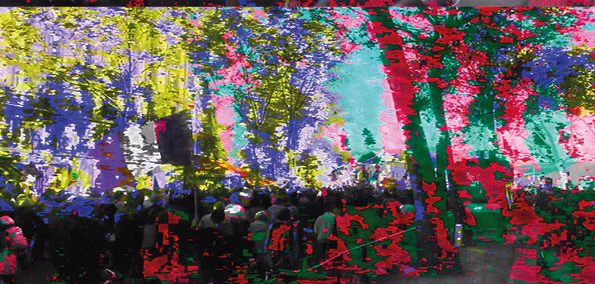
PROJECT
Passion for Fear
Passion for Fear is a research in progress, thought as the second part of a diptych that would follow the show Hello world . This second part is built around Maxime Arnould’s sensation of a lost future or of the impossibilitý of perspectives in this capitalist society, in which technology would become the main vector of creation of new realities.
“I was born 9 years before the fall of the World Trade Center in 2001, an event that marks the beginning of a large-scale dissemination of conspiracy ideas especially through the democratization of the internet. My youth, I lived it in a societý built around the fear of new terrorist attacks, overhung by the return also on a large scale in Europe, of fascist and conspiracy ideas, which served to structure a policy of governance around fear.“
The Internet has become one of the many tools where those who are passionate about fear, those who create it, come together. To feed this fear, leads them to think that there is another world, the one that would be hidden from us. And to make their “reality” visible, they propose an extremely well-staged imaginary one with photo montages, videos, highlighting a “hidden face of realitý”, massively shared on social networks.
Twenty years after the attack on the World Trade Center, Maxime started following anti-vax Telegram threads with fascist tendencies, such as the white rose, and going to anti-vax and anti-sanitary pass demonstrations, organized by far right parties. He began filming the speeches, observing the methods of organization and talking to the participants.
What is this fear that they convey?
How to deal with a current issue without promoting their narratives?
What are the symptoms of this need to express and share a fear?
To understand the making of these narratives, the research is based on a consultation of old websites in HTML to open-world video games, of the shift community, of Glitch art. The research will focus on the links between conspiracy, internet, video games, shifting, metavers, violence and fear, to understand the links that unite them.
However, to Maxime all these possibilities of new places and new narratives are factors of the same symptom: the need for history is indicative of a wilĺ to escape the narrative written for us, structured around the politics of fear leading us to envision a future without positive perspectives, induced by the narrative scheme of the capitalist system. What do these new stories, these narratives and fantasies, say about our relationship to realitý, our place in society, our need for an elsewhere? How fear is a vector of narrative creation?
With this research Maxime Arnould tries to start from the principle that this is a systemic problem and not an individual one, which would not stigmatize anyone.